Tips for Successful Winter Gardening
Gardening in winter might seem like a daunting task, but it can actually be a rewarding experience. Just imagine stepping into your garden and seeing vibrant colors and fresh produce, even when the world outside is blanketed in snow. With the right strategies, you can maintain a thriving garden during the chilly months. This article will guide you through essential tips that will help you select the right plants, prepare your soil, and protect your garden from the harsh winter elements. So, grab your gardening gloves and let’s dig into the world of winter gardening!
When it comes to winter gardening, selecting winter-hardy plants is crucial. These are the resilient varieties that can withstand cold temperatures while still offering beautiful blooms or edible produce. Think of them as the superheroes of your garden, ready to battle the frost! Some excellent choices include:
- Winter Pansies: These cheerful flowers can bloom even in freezing temperatures, adding a splash of color to your garden.
- Kale: Not only is it a nutritional powerhouse, but kale also tastes sweeter after a frost!
- Garlic: Planting garlic in the fall allows it to establish roots before winter, ensuring a bountiful harvest in spring.
By choosing the right plants, you set the foundation for a successful winter garden that can thrive even in the harshest conditions.
Proper soil preparation is vital for winter gardening success. Think of your soil as the bedrock of your garden; if it's not healthy, your plants won't be either. To ensure your soil remains nutrient-rich and well-drained throughout winter, consider the following techniques:
Conducting a soil test can help determine nutrient levels and pH balance. This process is like a health check-up for your garden. You can purchase a soil test kit or send a sample to a local extension service. Once you have your results, you'll know exactly what your soil needs to flourish.
After testing, you might find that your soil needs some amendments. This is where organic options come into play! Adding materials like compost, manure, or peat moss can significantly enhance soil fertility and structure. These amendments improve drainage and provide essential nutrients, ensuring your garden is ready for the winter.
Mulching is another effective strategy for winter gardening. Think of mulch as a cozy blanket for your plants! It provides insulation and moisture retention, protecting your plants from frost and temperature fluctuations. You can use various types of mulch, such as straw, wood chips, or leaves, each offering unique benefits. A thick layer of mulch can help maintain a stable temperature in the soil, allowing your plants to thrive even when the weather outside is frightful.
Watering during winter requires a different approach than in warmer months. While it might seem counterintuitive, proper hydration is essential for your plants. During winter, the soil can dry out, especially if there are periods of little snow cover. Adjust your watering schedule to account for cooler temperatures, and check the moisture levels regularly to ensure your plants are getting the hydration they need.
Winter weather can be harsh on plants, so it's essential to take protective measures. Think of these strategies as your plants' winter armor! Here are some effective methods:
Frost cloths can significantly reduce the risk of frost damage. These lightweight materials create a protective barrier that traps heat while allowing light and moisture to penetrate. To maximize their effectiveness, position frost cloths over your plants before the temperature drops, ensuring they are secured against strong winds.
Creating microclimates in your garden can help protect sensitive plants. By utilizing structures like walls, fences, or even larger plants, you can create warmer areas that shield your plants from harsh winds and cold temperatures. Consider placing tender plants near these protective structures to give them a fighting chance against the elements.
Q: Can I grow vegetables in winter?
A: Yes! Many vegetables, such as kale, spinach, and garlic, can thrive in winter conditions, especially if you choose the right varieties and protect them adequately.
Q: How often should I water my winter garden?
A: It’s essential to monitor soil moisture during winter. Water your garden whenever the top inch of soil feels dry, but be cautious not to overwater, as this can lead to root rot.
Q: What is the best mulch for winter gardening?
A: Organic mulches like straw, shredded leaves, or wood chips are excellent choices. They provide insulation and improve soil health as they break down over time.
With these tips in hand, you’re well on your way to becoming a winter gardening pro! Embrace the challenge, and watch your garden thrive even in the coldest months.
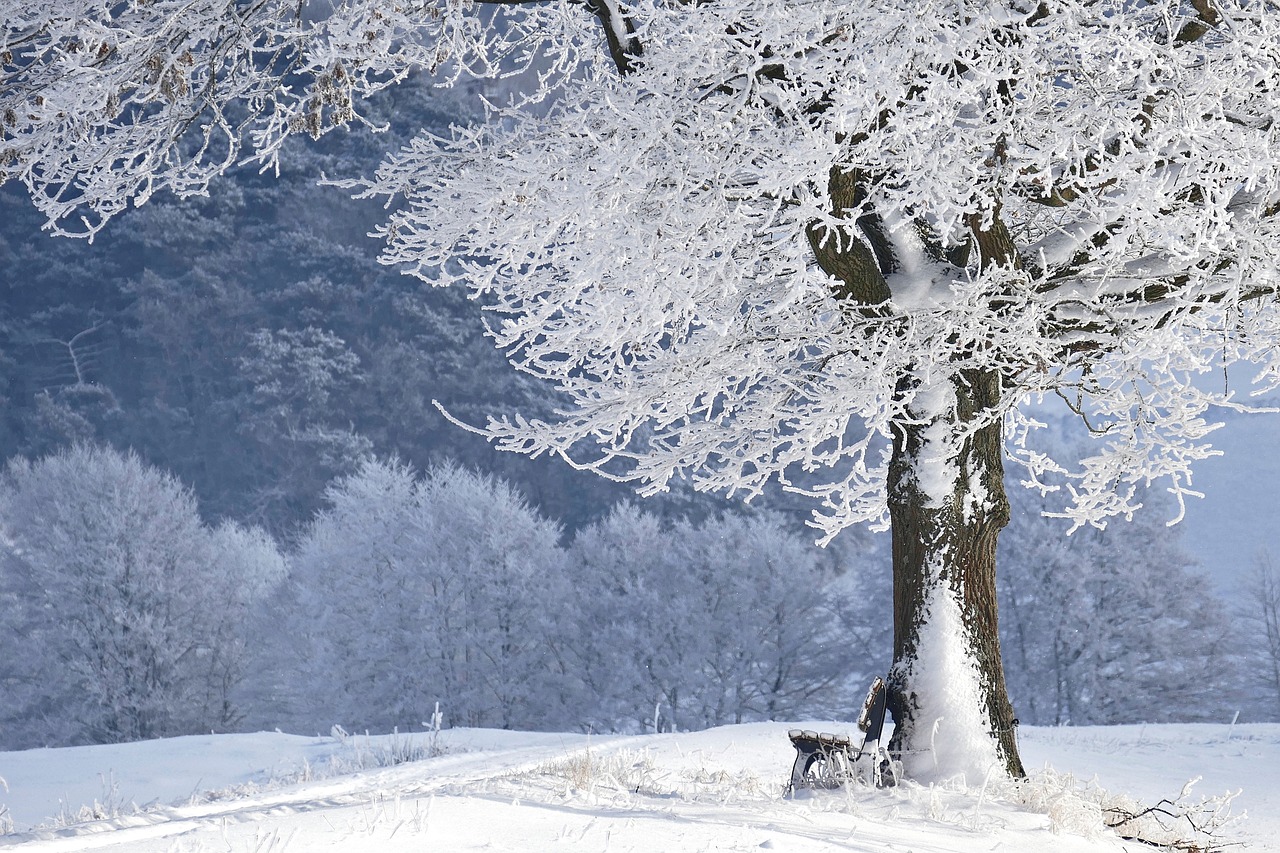
Choosing the Right Plants
When it comes to winter gardening, is like picking the perfect winter coat—it's essential for keeping your garden cozy and thriving despite the chill. Not all plants can brave the cold, so it's crucial to select varieties that are not only hardy but also capable of bringing a splash of color or even some delicious edibles to your winter landscape. Think of your garden as a canvas; the right plants will be your vibrant colors that make the scene come alive during the bleak winter months.
Some of the best choices for winter gardening include evergreens, winter-blooming flowers, and cold-tolerant vegetables. Evergreens, such as pines and spruces, provide a lush backdrop against the starkness of winter, while plants like hellebores and witch hazel can surprise you with their blooms when most other plants are dormant. On the edible side, consider kale, spinach, and garlic, which not only survive the cold but can also be harvested throughout the season.
Here’s a quick look at some of the best winter plants:
| Type | Examples | Benefits |
|---|---|---|
| Evergreens | Pines, Spruces, Cedars | Provide year-round structure and color |
| Winter-Blooming Flowers | Hellebores, Witch Hazel, Snowdrops | Add color and interest during winter |
| Cold-Tolerant Vegetables | Kale, Spinach, Garlic | Can be harvested even in winter |
When selecting plants, it’s also important to consider your local climate and the specific conditions in your garden, such as sunlight exposure and soil type. For instance, if you live in a region with harsh winters, look for zone-appropriate plants that can withstand the cold temperatures. Gardening zones are a great way to determine which plants will thrive in your area, so be sure to check the USDA Plant Hardiness Zone Map before making your selections.
In addition to hardiness, think about plant placement. Grouping plants together can create a microclimate that offers extra protection from the cold. For example, planting hardy perennials near a south-facing wall can provide warmth and shelter from harsh winds, allowing them to flourish even in the depths of winter. Remember, your garden is a living ecosystem, and every plant plays a role in its overall health and beauty.
Ultimately, the key to successful winter gardening lies in planning and preparation. By choosing the right plants and strategically placing them in your garden, you can create a winter wonderland that not only survives but thrives. So grab your gardening gloves, and let’s get to work on building a winter garden that will make your neighbors green with envy!
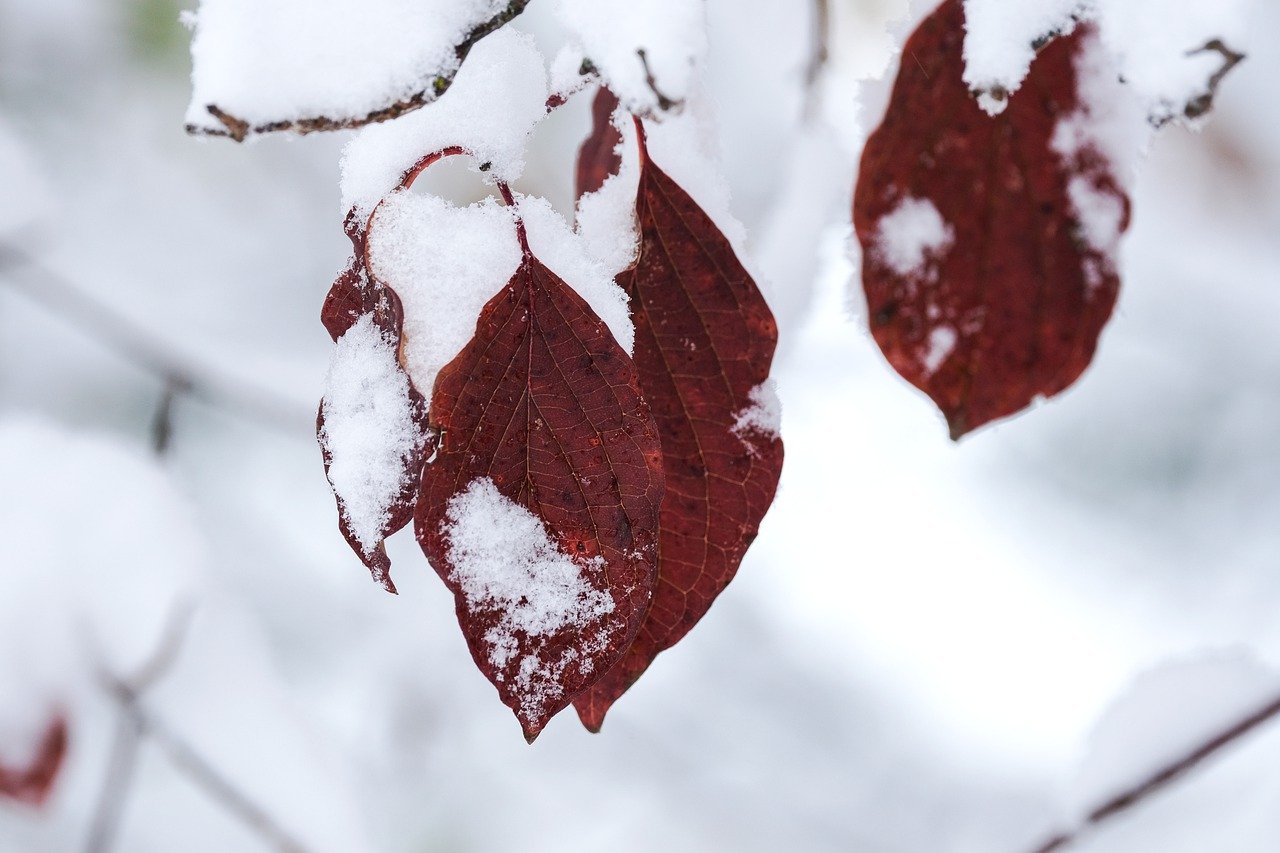
Preparing Your Soil
When it comes to winter gardening, is like laying a solid foundation for a house. If the foundation is weak, everything built on top of it is at risk. Just as you wouldn’t want to build a house on shaky ground, you don’t want to neglect your soil during the colder months. Proper soil preparation not only enhances the health of your plants but also ensures that they can withstand the harsh winter conditions. So, let’s dig into the essential techniques that will keep your garden thriving even when the temperatures drop!
First things first: you need to know what you’re working with. Conducting a soil test is a crucial step in understanding your soil's nutrient levels and pH balance. Think of it as a health check-up for your garden. By testing your soil, you can identify any deficiencies or imbalances that could hinder your plants' growth. To perform a soil test, you can either purchase a DIY kit from a garden center or send a sample to a local agricultural extension service. Once you have your results, you can make informed decisions about what amendments your soil might need.
Once you know what your soil needs, it’s time to amend it. This process involves adding materials that will improve the soil's fertility and structure. Here are some of the best organic options:
- Compost: This is like a multivitamin for your garden. It enriches the soil with nutrients and improves its ability to retain moisture.
- Manure: Well-rotted manure adds essential nutrients and boosts microbial activity, which is vital for healthy soil.
- Peat Moss: This helps improve soil aeration and moisture retention, making it easier for roots to establish.
By incorporating these amendments into your soil, you're setting your plants up for success, allowing them to draw on a rich reservoir of nutrients throughout the winter.
Now that your soil is prepped and primed, it’s time to think about mulching. Mulch acts as a protective blanket for your garden, providing insulation and moisture retention during the cold months. There are various types of mulch you can use, including straw, wood chips, and even shredded leaves. Each type has its unique benefits:
| Type of Mulch | Benefits |
|---|---|
| Straw | Great for insulation and weed suppression. |
| Wood Chips | Long-lasting and helps improve soil structure over time. |
| Shredded Leaves | Free and excellent for adding organic matter to the soil. |
Applying a thick layer of mulch around your plants not only protects them from frost but also moderates soil temperature and moisture levels, creating a more stable environment for growth.
Finally, let’s talk about watering during the winter months. It might sound counterintuitive, but your plants still need hydration even when it’s cold outside. However, the approach to watering in winter is different from other seasons. You should aim to water during the warmer parts of the day, allowing the moisture to penetrate the soil before temperatures drop again. This practice helps prevent root damage from freezing and ensures that your plants have the moisture they need to survive and thrive.
In conclusion, preparing your soil is an essential step in winter gardening. By testing your soil, amending it with organic materials, applying mulch, and adjusting your watering strategy, you can create a robust foundation for your plants. Remember, a little preparation goes a long way in ensuring your garden flourishes, even in the coldest months!
- How often should I test my soil? It’s recommended to test your soil at least once a year, especially before planting seasons.
- Can I use any type of mulch for winter gardening? While most organic mulches work well, avoid using fresh grass clippings or any material that might harbor pests.
- Should I water my plants during a frost? Yes, watering before a frost can help insulate the plants and prevent damage.
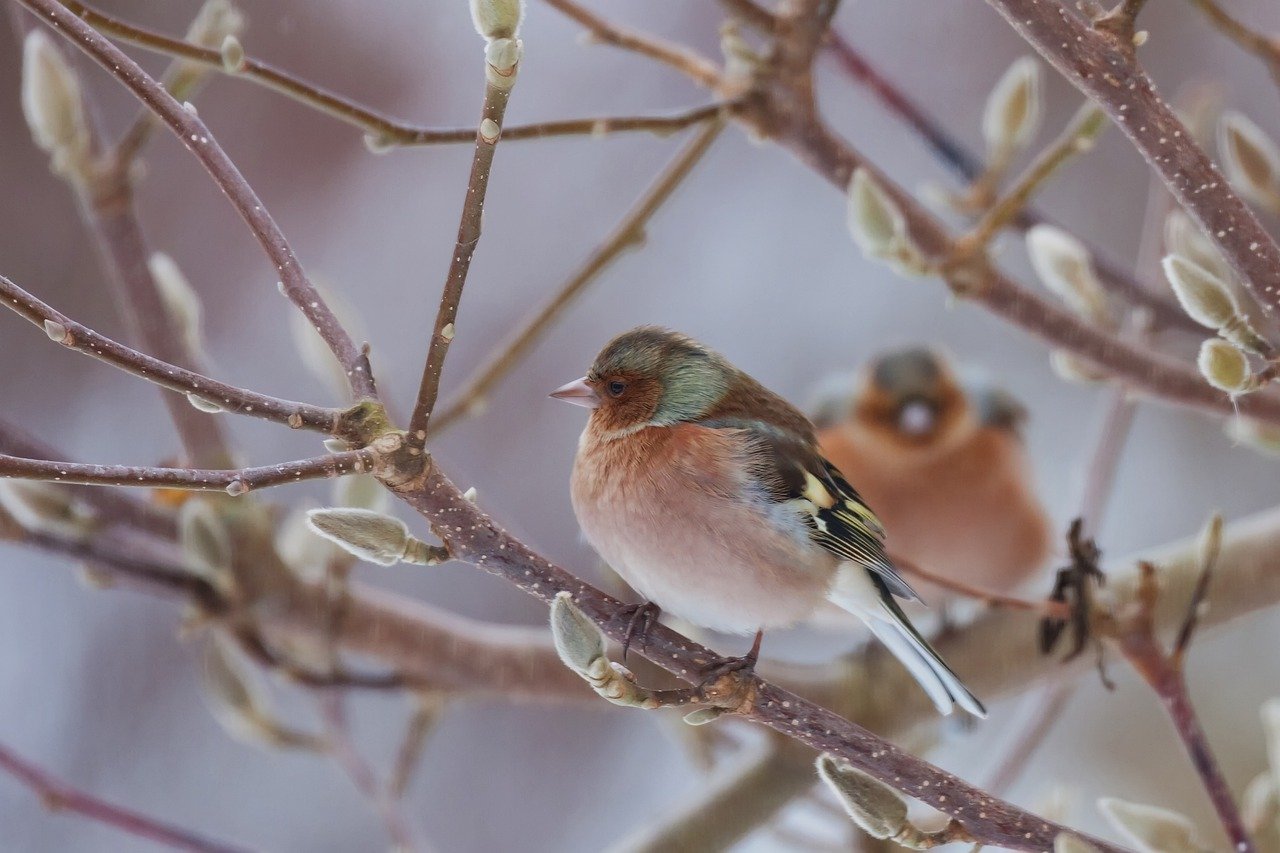
Soil Testing
When it comes to winter gardening, one of the most crucial steps you can take is . Just like a doctor checks your health, testing your soil can reveal its nutrient levels and pH balance, ensuring your plants have the best chance to thrive. But how do you go about it? First, you'll want to gather samples from various spots in your garden. Aim for about 6-8 inches deep, as this is where most plant roots will be searching for nutrients. Combine these samples into a bucket to create a composite sample that represents your garden's overall health.
Once you have your sample, it’s time to send it off to a lab or use a home testing kit. Many local extension services offer affordable testing, and some even provide detailed reports. You might be surprised by what you find! For instance, your soil might be too acidic or alkaline, which can hinder your plants' ability to absorb nutrients. A typical soil test will measure levels of key nutrients such as nitrogen (N), phosphorus (P), potassium (K), as well as pH levels and organic matter content. Understanding these elements can be a game-changer for your winter garden.
After you receive your results, interpreting them correctly is vital. For example, if your nitrogen levels are low, you might need to consider adding organic fertilizers or compost to boost fertility. On the other hand, if your soil is too acidic, you can amend it with lime to create a more balanced environment. This proactive approach not only enhances soil health but also prepares your garden for the cold months ahead.
In summary, soil testing is a simple yet powerful tool in your winter gardening arsenal. By knowing the exact condition of your soil, you can make informed decisions that lead to a flourishing garden, even when temperatures drop. Remember, a healthy garden starts with healthy soil!
- How often should I test my soil? It's recommended to test your soil every 2-3 years, or annually if you're making significant changes to your garden.
- What time of year is best for soil testing? Fall is an excellent time to test your soil, allowing you to make necessary amendments before winter.
- Can I test my soil at home? Yes! Home testing kits are available at garden centers and are a quick way to gauge your soil's health.
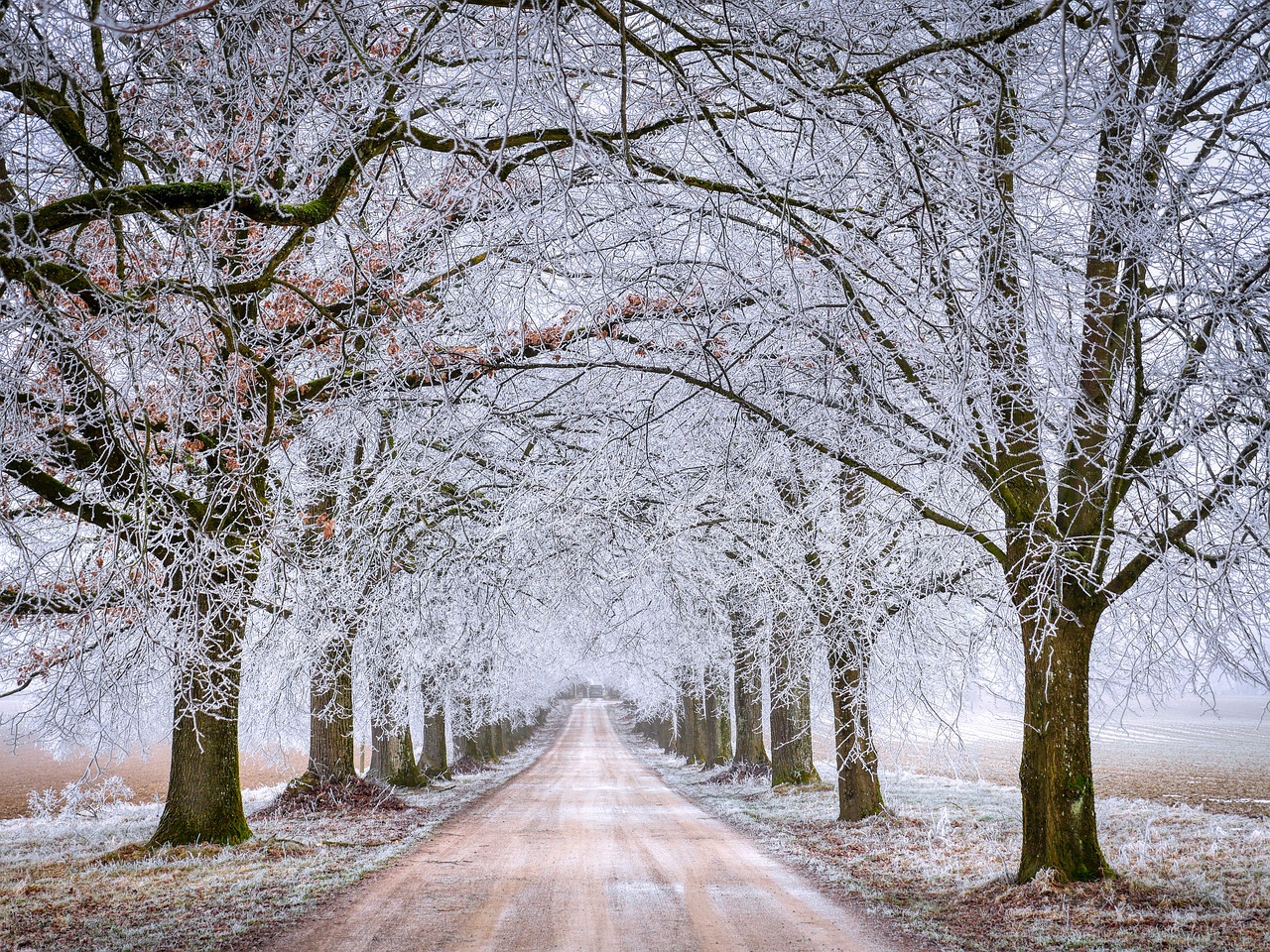
Amending Soil
When it comes to winter gardening, amending your soil is like giving your plants a cozy blanket to snuggle under during the cold months. Just as we need a nutritious diet to stay healthy, your garden's soil requires the right amendments to ensure it remains fertile and well-structured. So, what exactly do you need to do to prepare your soil for the winter chill? First, let's talk about the types of organic materials that can significantly enhance your soil's health.
One of the best ways to amend your soil is by incorporating compost. This dark, crumbly substance is packed with nutrients and beneficial microorganisms that help improve soil structure and fertility. When you mix compost into your garden beds, you're not just boosting nutrient levels; you're also enhancing the soil's ability to retain moisture, which is essential during those dry winter spells. Aim to add about a 2-3 inch layer of compost to your garden beds before the frost sets in.
Another great option is manure. Well-aged manure, such as from cows or chickens, can provide a rich source of nitrogen and other essential nutrients. However, it’s important to ensure that the manure is well-composted to avoid burning your plants with excess nitrogen. Mixing in aged manure not only enriches the soil but also promotes microbial activity, which is vital for breaking down organic matter and releasing nutrients over time.
In addition to compost and manure, consider adding other organic amendments such as peat moss, leaf mold, or even green manures (cover crops). These materials can help improve soil aeration and drainage, creating a more hospitable environment for your plants even in winter. If your soil is particularly heavy or clay-like, adding sand or perlite can improve drainage, preventing waterlogging that can lead to root rot.
To illustrate the benefits of different soil amendments, take a look at the following table:
| Amendment | Benefits |
|---|---|
| Compost | Enhances nutrient levels, improves moisture retention, and boosts microbial activity. |
| Well-aged Manure | Provides nitrogen, improves soil structure, and promotes beneficial microorganisms. |
| Peat Moss | Improves soil aeration and moisture retention, ideal for sandy soils. |
| Leaf Mold | Enhances soil structure and moisture retention, great for improving clay soils. |
| Green Manures | Helps prevent erosion, adds organic matter, and improves soil fertility when tilled under. |
Once you've decided on the right amendments for your soil, it's essential to mix them in thoroughly. You can do this by using a garden fork or tiller to incorporate the amendments into the top 6-12 inches of soil. This not only ensures even distribution but also helps to aerate the soil, allowing roots to breathe and absorb nutrients more effectively.
Remember, amending your soil is not a one-time task. It’s an ongoing process that can lead to a thriving winter garden. By regularly checking your soil health and making necessary amendments, you can create a vibrant ecosystem that supports your plants through the harshest winter conditions.

Mulching Techniques
When it comes to winter gardening, mulching is like wrapping your plants in a cozy blanket. It serves multiple purposes, from protecting the soil to maintaining moisture levels and providing insulation against the harsh winter chill. Choosing the right type of mulch can make all the difference in ensuring your garden not only survives but thrives during those cold months. So, what are the best mulching techniques to consider?
First off, let's talk about the different types of mulch available. Organic mulches, such as straw, wood chips, and leaves, decompose over time, enriching the soil with nutrients. On the other hand, inorganic mulches like landscape fabric or gravel provide long-lasting coverage but don't contribute to soil fertility. Each type has its pros and cons, and the choice often depends on what you're growing and the specific conditions of your garden.
One of the most effective mulching techniques is to apply a thick layer of mulch—typically around 2 to 4 inches—around your plants. This thickness is essential because it creates a barrier that helps regulate soil temperature. During the winter, the mulch acts as an insulator, keeping the soil warmer than it would be exposed to the elements. Additionally, it prevents the soil from freezing and thawing too quickly, which can lead to root damage.
Another technique involves layering different types of mulch. For instance, you might start with a layer of straw for insulation and then top it off with wood chips for aesthetics and additional moisture retention. This combination not only looks great but also provides a robust defense against the elements. Remember, the key is to ensure that the mulch is not piled too high against the plant stems, as this can lead to rot and other issues.
Moreover, mulching can also help suppress weeds, which tend to thrive in the winter when other plants are dormant. By blocking sunlight, mulch reduces the chances of weed growth, allowing your winter plants to receive the nutrients and water they need without competition. However, it’s important to regularly check for any weeds that might break through, as they can still be persistent.
Now, let's address the moisture aspect. Winter can be surprisingly dry, and mulch plays a crucial role in retaining soil moisture. This is particularly important for plants that are still growing during the winter months, as they need a consistent supply of water to survive. By preventing evaporation, mulch ensures that your plants have access to the moisture they need, even when the temperatures drop.
In summary, mulching is an essential technique for anyone looking to maintain a healthy winter garden. Whether you opt for organic or inorganic materials, the benefits of mulching—such as temperature regulation, moisture retention, and weed suppression—are undeniable. So, don’t overlook this simple yet effective method; it’s one of the best ways to give your plants the protection they need to flourish in winter.
- What is the best type of mulch for winter gardening? Organic mulches like straw and wood chips are great for winter gardening as they provide insulation and improve soil health.
- How thick should I apply mulch in winter? A thickness of 2 to 4 inches is recommended to effectively insulate the soil and protect your plants.
- Can I use leaves as mulch? Yes, leaves can be an excellent mulch option, but make sure to chop them up first to prevent them from matting together.
- How often should I replace mulch? Organic mulches decompose over time, so it’s a good idea to replenish them annually or as needed to maintain their effectiveness.
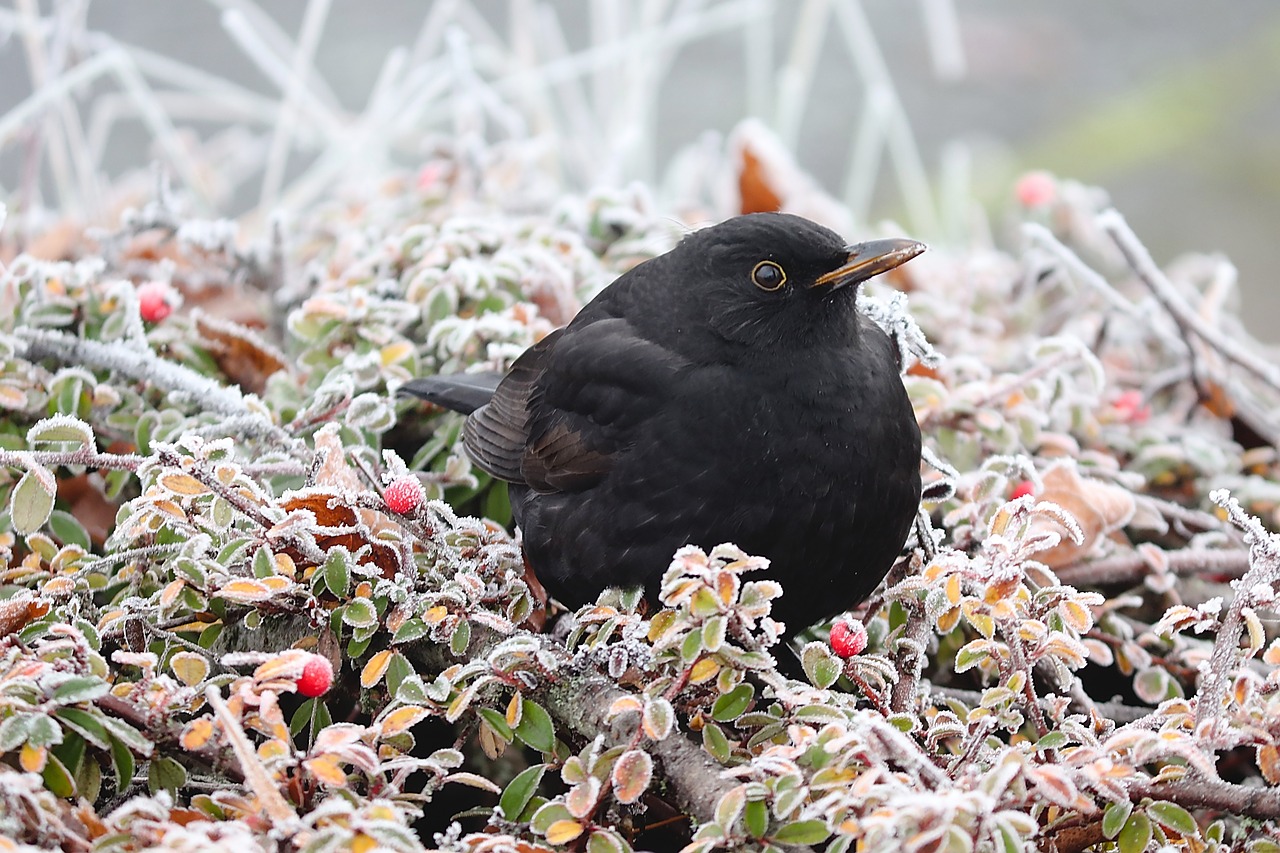
Watering Strategies
When it comes to winter gardening, play a crucial role in ensuring your plants thrive despite the chilly conditions. Unlike the warm months when a consistent watering schedule is essential, winter requires a more nuanced approach. The cold air can cause soil to dry out less quickly, but it's still important to monitor moisture levels closely. Think of your garden as a delicate balance; too much or too little water can tip the scales and harm your plants.
First off, it's essential to understand how cold temperatures affect soil moisture. During winter, the ground may freeze, creating a barrier that prevents water from reaching the roots. This means that even if it snows, the moisture might not be accessible to your plants. Therefore, you should consider watering during warmer days when the soil is thawed. Aim for midday when temperatures are at their highest, allowing the water to penetrate the soil before nighttime chill sets in.
Moreover, the frequency of watering will depend on several factors, including the type of plants you have, the weather conditions, and the soil composition. For instance, evergreen plants and certain perennials may require more moisture than others. To keep track, you might want to establish a simple system to monitor soil moisture. A quick check with your finger can help—if the top inch of soil feels dry, it’s time to water.
Another important aspect of winter watering is the method. Instead of using a standard garden hose, consider using a watering can or a drip irrigation system. This allows for more controlled watering, reducing the risk of over-saturating the soil. If you're using a hose, make sure to water slowly and deeply to encourage roots to grow deeper into the soil, which helps them withstand the cold better.
Additionally, you might want to consider creating a watering schedule based on the weather forecast. If you anticipate a warm spell, increase your watering; conversely, if a cold front is approaching, hold off to prevent ice formation around the roots. Always remember that timing is everything when it comes to winter watering.
Here's a quick overview of some effective watering strategies:
| Strategy | Description |
|---|---|
| Water on Warm Days | Water during the warmest part of the day to allow absorption before freezing temperatures return. |
| Monitor Soil Moisture | Check soil moisture regularly to determine when watering is necessary. |
| Use Controlled Methods | Utilize watering cans or drip systems for more precise watering. |
| Adjust Based on Weather | Modify your watering schedule according to the forecast and temperature changes. |
In conclusion, mastering your watering strategies during winter can make all the difference in keeping your garden healthy and vibrant. By being attentive to your plants' needs and adjusting your methods accordingly, you can ensure they survive the winter chill and come back stronger in the spring. Remember, just like a cozy blanket keeps you warm, proper watering keeps your plants snug and happy!
Q: How often should I water my winter garden?
A: It depends on the weather and soil conditions. Generally, check the soil moisture and water when the top inch feels dry, usually every couple of weeks.
Q: Can I water my plants if the ground is frozen?
A: It's best to wait until the ground thaws. Watering frozen soil can lead to ice formation, which can damage plant roots.
Q: What is the best time of day to water in winter?
A: Midday is ideal, as temperatures are warmer, allowing water to penetrate before the evening chill.

Protecting Your Plants
Winter can be a real challenge for gardeners, and protecting your plants is essential to ensure they survive the chill. Just like bundling up in a warm coat before stepping out into the cold, your plants need their own layers of protection. The harsh winter weather can bring frost, snow, and biting winds that threaten even the hardiest of plants. To keep your garden thriving, consider implementing a few protective measures that will act as a shield against the elements.
One of the easiest and most effective ways to protect your plants is by using frost cloths. These lightweight covers can be draped over your plants to create a barrier against frost while still allowing light and moisture to reach them. When using frost cloths, it's important to ensure they are secured properly to avoid being blown away by winter winds. You can use stakes, rocks, or even clothespins to keep them in place. Remember, the goal is to create a snug fit that traps warmth without suffocating your plants.
Another great method is to create microclimates within your garden. This involves using natural features like walls, fences, or even taller plants to create sheltered areas that are less exposed to harsh winds and cold temperatures. Think of it as building a cozy nook for your plants where they can escape the worst of winter. For instance, placing tender plants near a south-facing wall can provide them with extra warmth during the day. This simple adjustment can make a world of difference, allowing you to cultivate a wider variety of plants even in the coldest months.
In addition to these methods, consider using row covers or cold frames, which are like mini-greenhouses for your plants. These structures trap heat and create a more stable environment for growth. You can either purchase ready-made options or get creative and build your own using materials like old windows or plastic sheeting. The key is to ensure proper ventilation to prevent overheating on sunny days while still providing that much-needed warmth during the frigid nights.
Lastly, don’t forget about the power of windbreaks. If your garden is exposed to strong winds, planting a row of hardy shrubs or erecting a fence can significantly reduce wind speed and protect your plants. Just like how we seek shelter from the wind, your plants will appreciate the respite, allowing them to conserve energy and focus on growth instead of survival.
To summarize, protecting your plants during winter is all about creating a safe environment that mitigates frost damage and temperature fluctuations. Whether you opt for frost cloths, microclimates, row covers, or windbreaks, each method plays a crucial role in ensuring your garden not only survives but thrives throughout the colder months. So, gear up and give your plants the winter armor they deserve!
- What are frost cloths and how do I use them?
Frost cloths are lightweight covers that protect plants from frost while allowing light and moisture to pass through. Secure them over your plants to keep them warm during cold nights. - How can I create a microclimate in my garden?
Utilize natural features like walls, fences, or taller plants to create sheltered areas that provide warmth and protection from wind. - Are there any plants that are particularly good for winter gardening?
Yes! Some winter-hardy plants include kale, pansies, and certain varieties of winter vegetables that can thrive in colder temperatures.
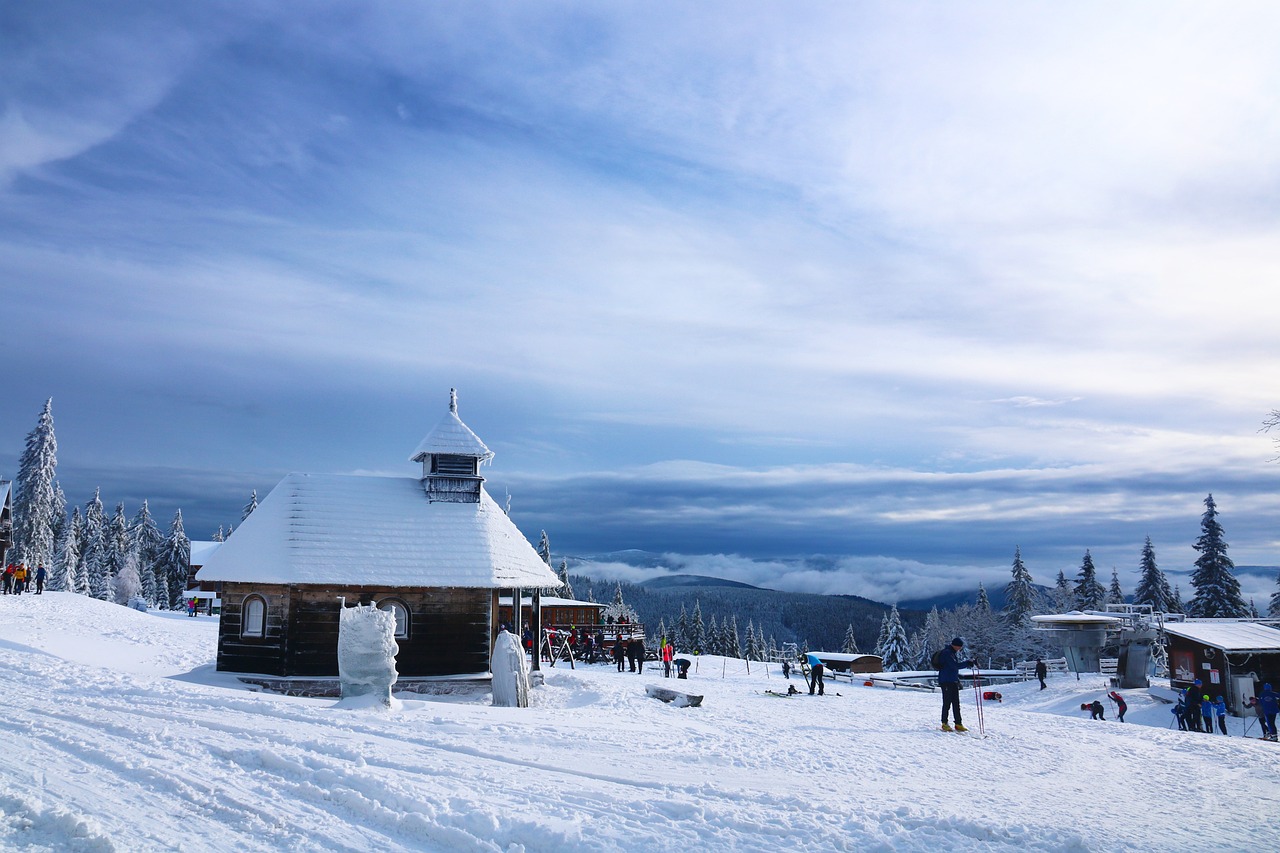
Using Frost Cloths
When winter rolls around, one of the best defenses you can arm your garden with is frost cloths. These lightweight, breathable fabrics are designed to protect your plants from the chilling bite of frost, which can wreak havoc on your precious greenery. But how do you use them effectively? First off, it’s essential to choose the right type of frost cloth. Look for materials that are specifically labeled for garden use, as they are made to allow sunlight and moisture to penetrate while keeping the cold at bay.
To maximize the benefits of frost cloths, timing is everything. It's ideal to cover your plants before the temperatures dip too low, ideally in the late afternoon or early evening. This way, the cloth can trap the heat generated by the soil, creating a cozy microenvironment for your plants. When covering, ensure that the cloth extends all the way to the ground. This prevents cold air from sneaking in around the edges. You can use rocks, bricks, or other weights to secure the cloth in place, ensuring it won’t blow away in strong winds.
Another critical point is to avoid direct contact between the cloth and the plant foliage. This can lead to frost damage, defeating the purpose of using the cloth in the first place. You can create a frame using stakes or hoops to elevate the cloth above the plants, allowing for air circulation while still providing protection. Here’s a quick overview of the dos and don’ts of using frost cloths:
- Do: Cover plants before frost is expected.
- Do: Use weights to secure the cloth.
- Do: Elevate the cloth to prevent contact with plants.
- Don’t: Leave the cloth on during sunny days, as it can trap heat.
- Don’t: Use heavy materials that block light.
After the frost threat has passed, it's essential to remove the frost cloth during the day. This allows your plants to bask in the sun's warmth and prevents overheating, which can happen if the cloth is left on during milder weather. Remember, while frost cloths are an excellent protective measure, they should be part of a broader winter garden strategy that includes proper plant selection and soil care.
In conclusion, using frost cloths can significantly reduce the risk of frost damage, allowing your garden to thrive even in the coldest months. By following these simple guidelines, you’ll ensure that your plants remain cozy and protected, ready to burst back to life when spring arrives.
Q: How long can I leave frost cloths on my plants?
A: It’s best to remove frost cloths during the day when temperatures rise above freezing. You can replace them in the evening if frost is expected.
Q: Can I use frost cloths for all types of plants?
A: Yes, frost cloths are versatile and can be used for most garden plants, including vegetables, flowers, and shrubs.
Q: What should I do if I don't have frost cloths?
A: In a pinch, you can use old bed sheets or towels to cover your plants, but make sure they are breathable to avoid trapping moisture.
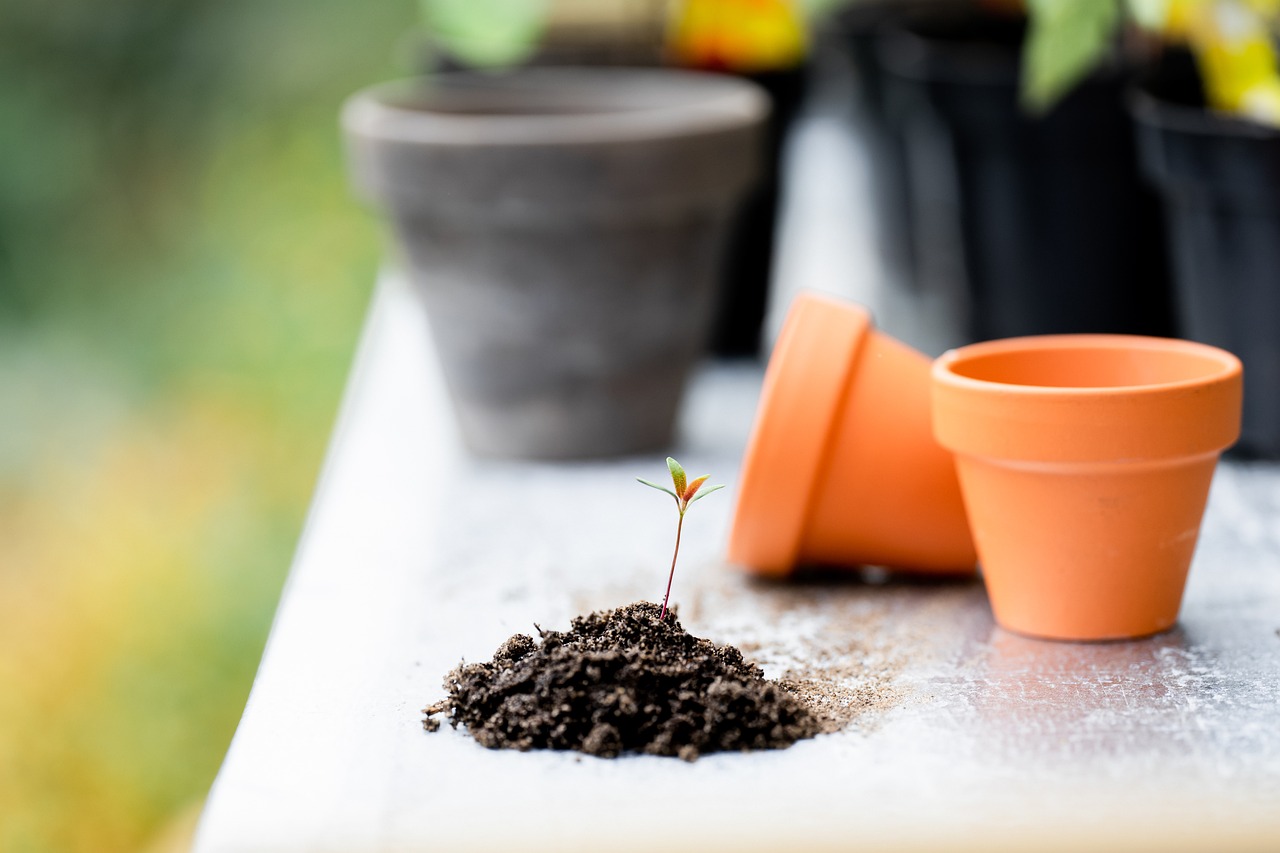
Creating Microclimates
When it comes to winter gardening, can be a game-changer for your plants. Think of a microclimate as a cozy little pocket of warmth and protection amidst the often harsh and unforgiving winter chill. Just like how some people prefer to huddle under a warm blanket on a cold night, your plants can benefit from similar strategies to keep them thriving. By utilizing natural features in your garden, you can create these warm havens that shield your plants from the elements.
One effective way to create a microclimate is by using structures such as walls, fences, or even large rocks. These elements can absorb heat during the day and release it slowly at night, providing a warmer environment for your plants. For instance, if you have a south-facing wall, it can act as a thermal mass, soaking up sunlight and radiating warmth back into the garden as temperatures drop. Positioning your garden beds near these structures can significantly enhance the survival rate of your more delicate plants.
Another clever technique is to group your plants strategically. By planting them in clusters, you can create a windbreak effect. This not only helps to block cold winds but also allows the plants to share warmth among themselves. Think of it like a group of friends standing close together for warmth on a chilly day. Additionally, taller plants can be positioned to shield shorter ones from harsh winds and frost, creating a protective barrier that nurtures your winter garden.
Don't forget about the power of ground cover. Using low-growing plants or mulch can help retain soil heat and moisture, further enhancing your microclimate. Organic materials like straw, leaves, or wood chips not only insulate the soil but also decompose over time, enriching it with nutrients. This creates a win-win situation where your plants benefit from both warmth and nourishment. In fact, a well-mulched garden can be several degrees warmer than bare soil, making a significant difference in plant survival.
Finally, consider using row covers or cloches to provide extra protection for your plants. These can trap heat and create a mini greenhouse effect, allowing you to extend your growing season even into the colder months. Just be sure to monitor the temperature underneath these covers, as too much heat can be detrimental, especially on sunny winter days. By paying attention to these details and implementing these strategies, you can create a thriving winter garden that defies the odds.
- What is a microclimate? A microclimate is a small area within a larger climate zone that has different climatic conditions, often due to natural features or human-made structures.
- How can I create a microclimate in my garden? You can create a microclimate by using walls, fences, and grouping plants together for protection, as well as utilizing mulch and row covers to retain heat.
- Why are microclimates important for winter gardening? Microclimates help protect plants from harsh winter conditions, allowing them to thrive and survive in otherwise unfavorable environments.
Frequently Asked Questions
- What are the best plants for winter gardening?
Choosing the right plants is crucial for winter gardening success. Some excellent options include kale, spinach, pansies, and ornamental cabbage. These varieties are known for their hardiness and can withstand cold temperatures while still providing vibrant colors or fresh produce.
- How can I prepare my soil for winter gardening?
Preparing your soil involves several steps. Start with a soil test to determine nutrient levels and pH balance. Once you have the results, you can amend your soil with compost, manure, or other organic materials to enhance fertility. Additionally, consider using mulch to protect the soil from freezing temperatures and retain moisture.
- What watering strategies should I use during winter?
Watering in winter is different from other seasons. It's essential to adjust your schedule to account for cooler temperatures. Water your plants during the day when temperatures are warmer, and always check the moisture level of the soil to avoid overwatering, which can lead to root rot.
- How can I protect my plants from frost?
To protect your plants from frost, consider using frost cloths or row covers. These materials create a barrier against cold air and can significantly reduce the risk of frost damage. Make sure to position them correctly for maximum effectiveness, ensuring they cover the plants without touching the foliage.
- What are microclimates, and how can they help my garden?
Microclimates are small areas within your garden that have different climatic conditions than the surrounding area. You can create microclimates by utilizing natural features like walls or fences to shield plants from harsh winds or by grouping plants together for mutual protection. This can help sensitive plants thrive even in colder months.



















